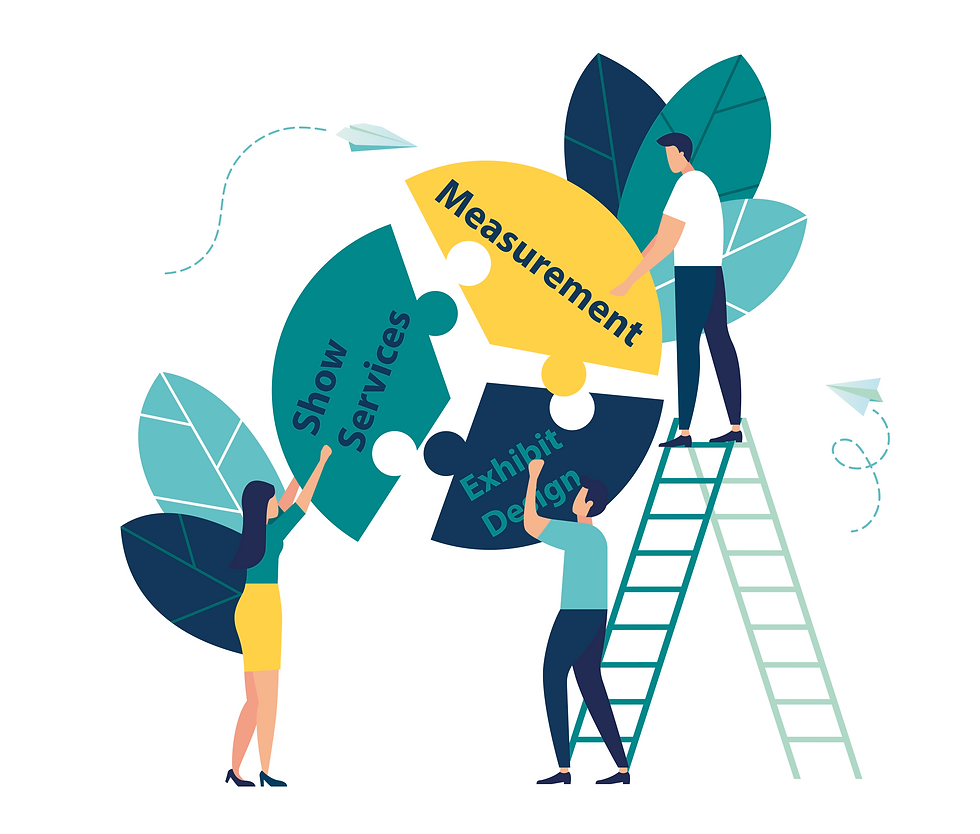Rethinking Booth Location: What the Data Really Says
- fs-partners
- Sep 20
- 3 min read
Updated: Sep 22

Exhibitors have heard it before: Location is everything. The belief that a booth closer to the entrance will naturally outperform others is nearly universal. But our data suggests otherwise - and it may be time to rethink the rulebook.
Visibility Isn’t the Same as Engagement
Booths near entrances or along central aisles often generate high levels of visibility. FastSensor’s Awareness Score metric confirms that booths near main aisles or entrances typically capture high numbers of brand impressions (eyes on the booth) and walk-by traffic. But a high Awareness Score doesn’t necessarily translate into high conversions.
There’s a psychological hurdle at play. Walking into an exhibit hall is one decision; committing to entering the very first booth you encounter or see is another. High awareness doesn’t always translate into action.
“The majority of visitors will ‘proceed with caution’ — not because they’re all shy, but because of our natural tendency to fear the unknown. Entering a big, crowded trade show floor is exactly that. It’s like a deep dive: you need to mentally prepare before committing to small talk, a handshake, or an activity,” says Victoria Matey, Event Psychology Advisor and co-founder Matey Events.” So while their feet carry them toward the first booth, their minds might not be fully set up just yet — and that ultimately shapes what they do.”
Exhibit Hall Hotspots
In fact, some of the strongest engagement often occurs away from entrances. Networking lounges, theaters, poster areas and experiential activations can create “gravity wells” of traffic. Booths strategically positioned near these hotspots may capture more meaningful attention than those in organizer-declared “prime” locations.
This raises a critical question: Are exhibitors over-indexing on organizer-declared prime locations instead of actual attendee behavior patterns? Too often, booths are designed around assumptions of straight-line traffic from the entrance, only to find the real gravity wells sit elsewhere. The result is a snowball effect: Orientation, staffing and displays optimized for imagined traffic flow rather than the real one.
Matching Location to Objectives
The smarter question isn’t “Where is the best booth location?” but rather “Which location best supports my objectives at this show - and within my booth?”
That means moving past simple rules of thumb and asking more nuanced questions:
Show-Programming: When and where will peaks in traffic occur?
Traffic flow is rarely evenly distributed. Breaks in programming, adjacent award sessions or coffee lines can create short-lived surges.
Hall-Level Dynamics: How do stairwells, escalators and reconfigured corridors redirect flow?
Sometimes the “main” entrance isn’t the real one. Visitors may naturally arrive from whichever escalator or session exit is the closest. Even subtle visual cues - like a clear view to the back of the wall - can pull deeper or nudge them to turn right off of the main aisle.
In-booth Design Choices: What happens inside your booth?
Content and layout determine whether visibility translates into engagement. Immersive technologies like VR thrive in controlled environments but struggle near noisy lounges or coffee stations. Enclosed theaters may look sleek yet they block sightlines in the wrong position and often discourage casual exploration. In-booth hospitality zones or large seating areas risk being consumed by nearby show-provided food courts or lunch stations - resulting in your seating area serving the hall’s needs more than your own.
These questions don’t have one-size-fits-all answers. However, by reframing the question away from prime locations and toward purposeful locations, exhibitors can start weighing these variables against their true objectives - brand awareness, lead generation, deep engagement or a mix of all three.
Follow the Data, Not Tradition
Industry conversations about booth location often rely on intuition: entrances equals visibility and visibility equals value. But these assumptions deserve scrutiny.
Entrances capture eyes, but not always feet. Attendees often head straight for social or educational hubs before slowing down to explore.
Visibility is not the only value. Awareness is necessary but it’s just the first step in a journey that includes attraction, conversion and engagement.
“Attention is only the first step of engagement. Other factors like cognitive overwhelm, motivation, and context also play a huge role in decision-making,” adds Victoria.
The real opportunity is to combine expert design instincts with unbiased, AI-powered analytics and to validate or challenge traditional wisdom.
The next frontier isn't opinion - is evidence. Break free from outdated rules and make location choices aligned with both ROI and ROO.




Comments